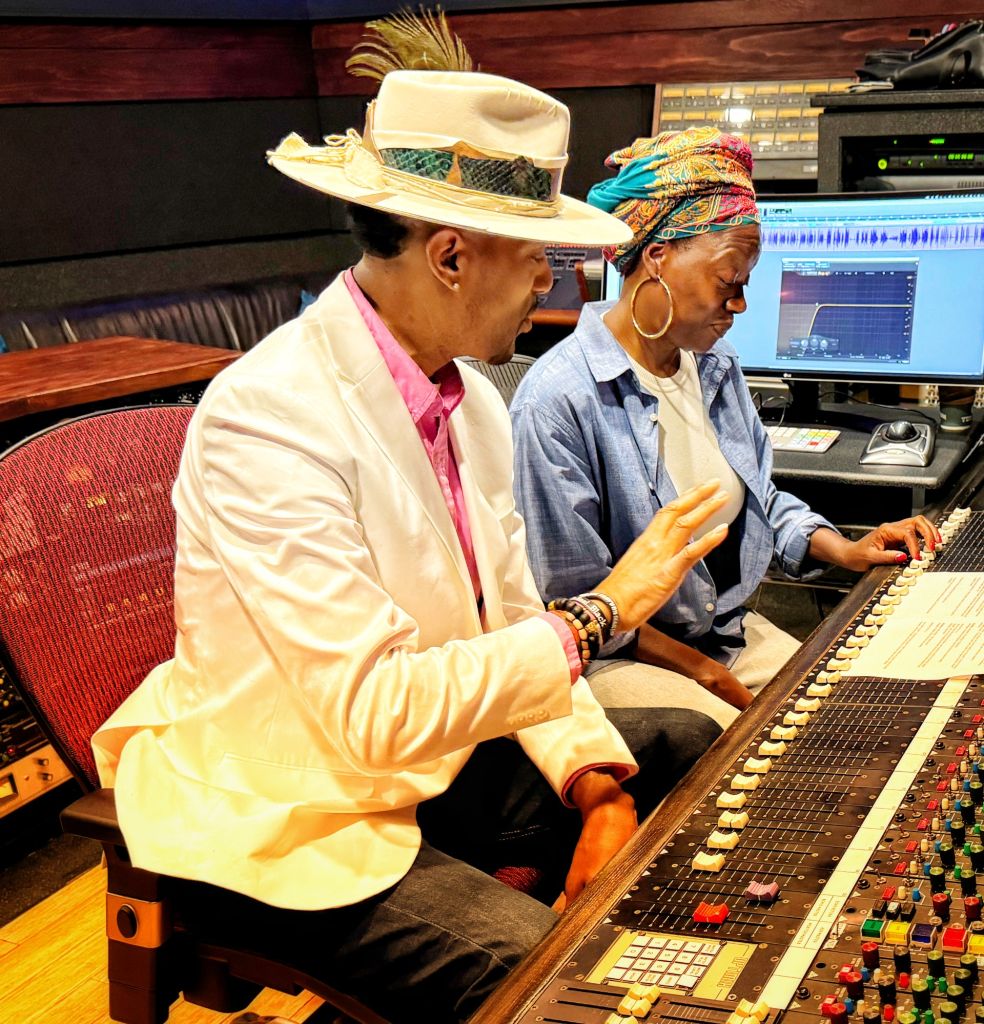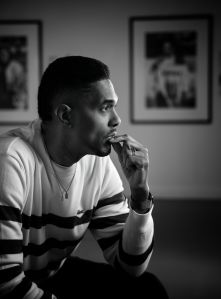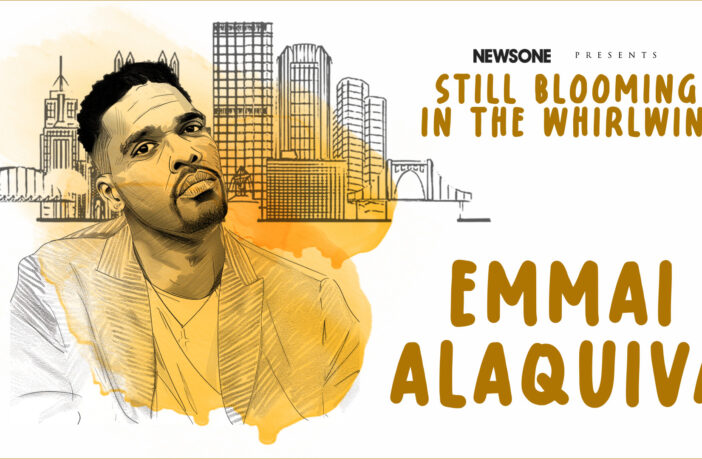Source: iOne Digital Creative Services/Emmai Alaquiva
The resume of multi-disciplinary Pittsburgh artist Emmai Alaquiva reads like a wish list scrawled in a teenager’s journal sometime in the 1990s. Creative director for visual projects for recording artists Common, Slum Village, and Raheem Devaughn – check.
Direct videos for Jay-Z’s “Book of HOV” exhibit at the Brooklyn Public Library, document The Roots Picnic, Mac Miller concerts, Hebru Brantley murals – check. Write and direct a Black Lives Matter PSA for the deaf seen by 300 million people, win four Emmys, be named one of Pittsburgh Magazine’s “40 Under 40” – check, check, check.
NewsOne Presents Still Blooming In The Whirlwind: Pittsburgh As A Black Cultural And Artistic Mecca
Now, Alaquiva turns his attention to the shocking rates of Black infant mortality in his forthcoming documentary, The Ebony Canal. Narrated by the Oscar, Emmy, Tony and Grammy-winning actress Viola Davis, the film explores a central theme in the director’s work: the myriad ways in which institutional racism creates not just disparity, but death; not just suffering, but silence.

Emmai Alaquiva with Viola Davis. | Source: Ya Momz House, Inc
The Ebony Canal is about birth, infant mortality, and Black maternal health. You work in a lot of different forms – mixed media installations, audio, photography. What was it about this project that lent itself to a feature-length documentary?
The Ebony Canal examines the HERstoric portal between the disparities of infant mortality and the current state of maternal health orbiting Black women. Despite the undercurrents, the mission aims to foster a new wave of solution-driven practices. The vision is to move maternal health forward in the journey to save Black mothers and Black babies.
Black infants have 2.4 times the infant mortality rate as white infants, according to a 2021 study by the Centers for Disease Control and Prevention (CDC). Infant mortality is the death of an infant before his or her first birthday, and the infant mortality rate is the number of infant deaths for every 1,000 live births. In addition to giving us key information about maternal and infant health, the infant mortality rate is an important marker of the overall health of a society. Data identifies specific risk factors for health disparities with big implications to close the gap for babies, their moms, their families, and our community.
This film is a passion project. Its subject matter parallels my mission in storytelling. Allyship coupled with advocacy has always been the marriage that I connect in the chapel of artivism. Moreover, a project of this magnitude afforded me the opportunity to combine multiple vessels of art forms such as photography, film, poetry, and music. A subject matter like infant mortality takes special patience and collaboration to represent the data.
In a previous work, OPTICVOICES: Mama’s Boys, you focused on the healing of Black women who have lost children to police brutality. Here, you’re telling a story about a different, but no less deadly, form of institutional racism: that of the healthcare system. Did you find parallels between the two projects, expected or otherwise?
I do find parallels in the subject matter and have the opportunity to update the narrative when it comes to Black and Brown people. As a filmmaker and artist, I wish to make films that are transformative and not transactional.
The subject matter of infant mortality and the loss that a mother feels with the [death]of a child is very similar. We are zoning in on the life of the voiceless. We have to tell the uncomfortable truth in order for us to be comfortable having the conversation surrounding change in our society. As artists, it is our duty to bring light to the narratives that have been in the dark for far too long. The subject matter at hand can’t be talked about enough, for no mother deserves to lose a child in the manner of gun violence or infant mortality.
Documentaries of this nature, it seems to me, always find their focus in the intimate and the specific – the stories of individuals. Can you talk a bit about some of your subjects in the film, how you found them, and why you chose them?
It was very important to examine all sides of the story of infant mortality, ranging from the deep clinical data to the cultural elements surrounding Black and Brown women, who oftentimes don’t get passionate justice through the artistic lens. When you look at mothers like [film subjects]Mariah Peoples, Alana Yzola Daly, Rachel Strader, and Larissa Lane, you get four different worlds. The women that we followed did not know each other, but they all had something in common: the high risk of their baby dying. Three times that of their white counterparts.

Source: Dave Hochendoner
As a filmmaker, you’ve worked with The Roots, Jay-Z, Mac Miller, Wiz Khalifa, J.PERIOD. And you’re a musician yourself, with roots in hip-hop. I think for folks who didn’t grow up in hip-hop, it may be hard to understand how hip-hop aesthetics can undergird and inform work in less obvious ways – how the suite of skills you learn as a hip-hopper and the way it teaches you to approach art, make their presence known in all kinds of work. I wonder if you have any thoughts about that.
I don’t come from a musical background, no one in my family plays any instruments or has a deep interest in music. Hip-hop saved my life when I fell in love with an album called 3 Feet High and Rising by De La Soul. The intricacies with which they were able to enter their lives into the quilt of artistry with that album proved to me that so much was possible. A song called “Me Myself and I” really resonated with me because growing up in a tough neighborhood, I often thought life would only be me, myself, and I. As life went on, hip-hop spoke to me in the way that nothing else would, and it would prove to be something that I’d carry with me for the rest of my life.
I strive to tell a story like Slick Rick or video edit it like DJ Premier, always being sure to find the rhythm and never skipping a beat through the story. This blessing gave me the blessing to work with artists on a wide scale, from Jay-Z to being one of the directors of Daniel Tiger’s Neighborhood.
The principles of hip-hop allow me to use my voice like an MC, find my melody like a DJ, move through networking circles like a breakdancer with careful choreography, and use my legacy like graffiti to tag each project [so it]can travel on the train of change that will forever be amplified louder than dry subway tracks through the Bronx.
What’s next for The Ebony Canal? And what’s next for you?
The Ebony Canal will have an advanced private screening in late spring, and I have recently been appointed vice chair of the Pennsylvania Council on the ARTS by the Office of Gov. Josh Shapiro. PCA reaches all 67 counties in Pennsylvania through millions in investments in the ARTS, from Pittsburgh to Philadelphia.
Adam Mansbach is a novelist, filmmaker (Barry), and writer whose work has appeared in The New Yorker, The New York Times Book Review, Esquire, The Washington Post and The Guardian. The Golem of Brooklyn is his latest book.
SEE ALSO:
Filmmaker Gregory Scott Williams Jr. Is Centering Those Who Choose Not To Protest
10 photos


